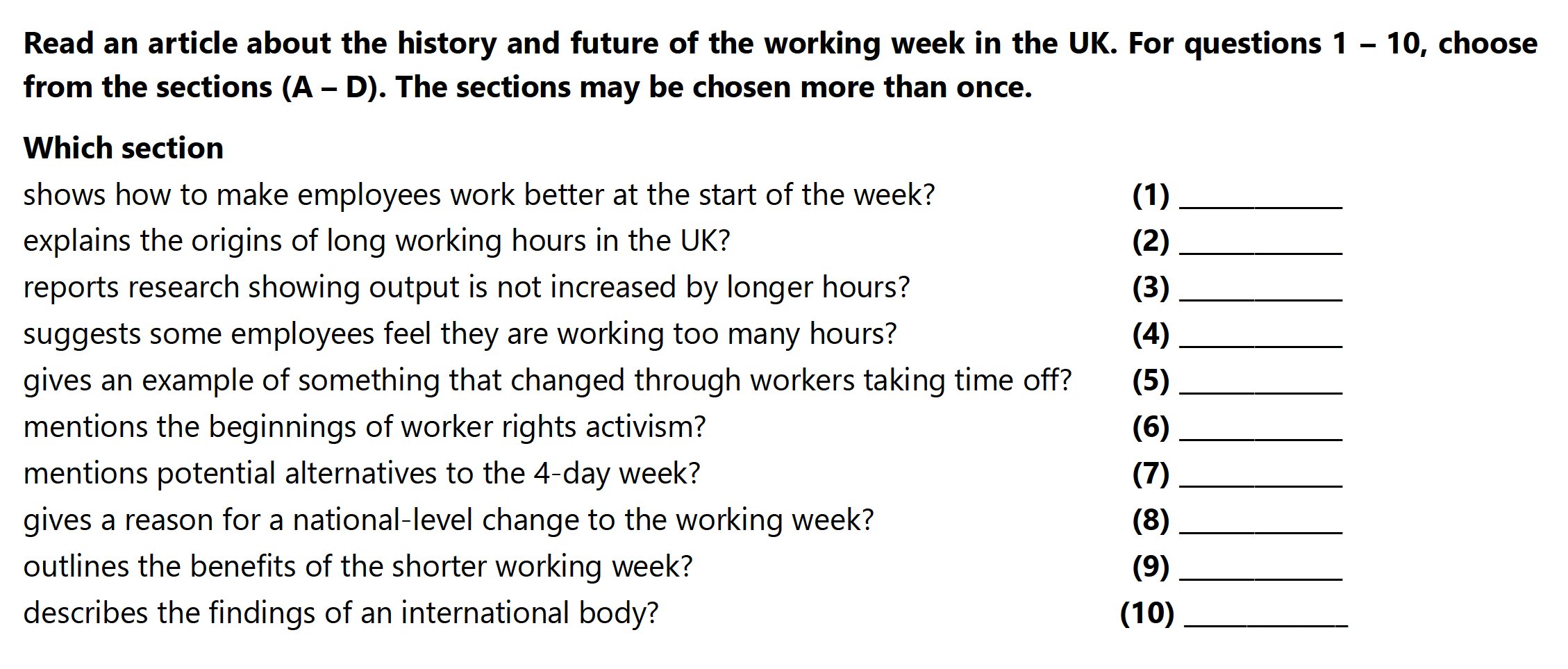You are going to read part of an article about archaeology in London. For questions 31–36, choose the answer (A, B, C, or D) which you think fits best according to the text.
Digging London
Roff Smith takes a look at archaeological activity in London
One of its earliest chapters came to light in 2014 at a three-acre building site in the financial district. Located in the ancient district of Cordwainer, where leather workers had plied their trade since Roman times, a 12-metre deep excavation pit turned out to be one of the most significant early Roman sites ever found in London.
As the soil was removed, entire streets were revealed, complete with shops, homes and yards. The whole area was in an astonishing state of preservation and more than 14,000 artefacts were found over the course of the dig. “This was the richest haul of small finds ever to come out of a single dig in the city,” says Sadie Watson, who supervised the operation.
The impressive collection contained nearly 400 rare wooden writing tablets, some of which still displayed legible letters, legal agreements, and financial documents. The quality of these extraordinary recent finds is thanks to a forgotten little stream called the Walbrook, which flowed through the heart of Roman Londinium on its way to the Thames. Its marshy banks and waterlogged soils preserved almost anything that fell into them.
"That’s the beauty of good old English damp," says one leading archaeologist, laughing. Thanks to the river and its tributaries, London has one of the best environments for keeping artefacts intact that anyone could hope to have. Leather, wood, and metal objects that would rot or rust away elsewhere come out of the ground here in amazingly good condition.
Despite that, not all of London’s archaeology is underground. Imposing segments of the original second-century Roman wall that once encircled the city can still be seen in places such as Tower Hill. And if you get your hair cut at the barbershop on the corner of Gracechurch Street and Leadenhall Market, you can see an arch support for the second-century Roman basilica in the basement downstairs.
The science of archaeology really found its feet when 19th-century engineers began building an extensive sewer system under the city. Amateur antiquarian Charles Roach Smith cast aside social convention, put on old clothes, and dropped down into the tunnels to follow the workmen. There he observed their digging, took notes, made drawings, and salvaged the few artefacts he could.
31. According to the passage, what was significant about the excavation site in Cordwainer?
A. It was the largest Roman site ever found in London.
B. It contained one of the earliest Roman streets ever discovered.
C. It revealed an exceptionally well-preserved area from Roman times.
D. It provided evidence of leather workers from the Roman period.
32. What is the main reason the artefacts at the Cordwainer site were so well-preserved?
A. The artefacts were buried deep underground, away from exposure.
B. The damp English climate kept the soil moist and preserved the items.
C. The saturated soils of the Walbrook stream prevented decay.
D. The artefacts were stored in containers that protected them from the elements.
33. Which of the following is mentioned as a visible reminder of Roman London that can still be seen above ground?
A. The remnants of the second-century Roman basilica.
B. Segments of the original Roman wall at Tower Hill.
C. The foundations of Roman homes in Gracechurch Street.
D. The original street layout of Roman Londinium.
34. According to the writer, London is considered to have one of the best environments for archaeological preservation because ____________ .
A. the high water table and frequent rainfall
B. the city's dense urban environment protects artefacts
C. the careful techniques used by modern archaeologists
D. the natural marshy soils and tributaries like the Walbrook
35. What attitude does the author express towards preserving artefacts in London?
A. Critical of the challenges archaeologists face due to the wet environment.
B. Neutral in providing factual information without expressing a strong opinion.
C. Dismissive of the role that London's environment plays in preservation.
D. Respectful and appreciative of the natural conditions that support conservation.
36. What is the main purpose of the passage as a whole?
A. To inform readers about the significance of recent archaeological finds in London.
B. To persuade readers of the importance of preserving London's historical sites.
C. To entertain readers with stories of London's hidden underground secrets.
D. To explain the challenges faced by archaeologists when excavating in urban areas.





